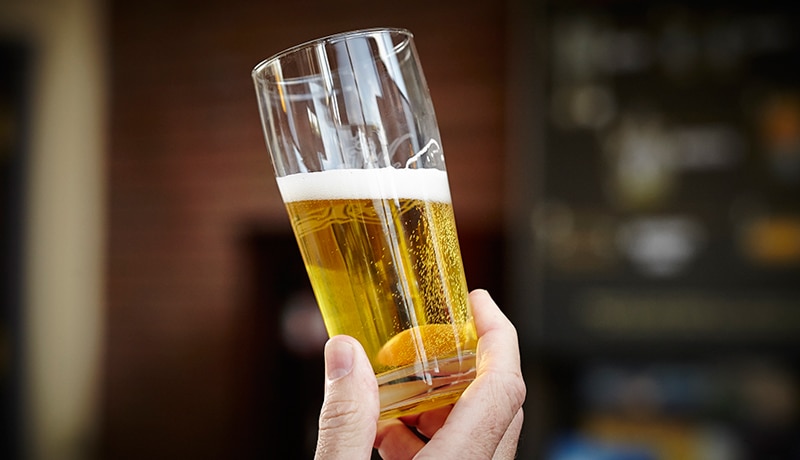Contents
Beer Brewing
Beer brewing is an ancient craft that dates back thousands of years. It involves a complex series of steps that transform simple ingredients into a delightful beverage. The basic ingredients used in brewing beer are water, malted grains, hops, and yeast. Mashing is the process where malted grains are steeped in hot water to extract their fermentable sugars, enzymes, and flavors.The Role of Mashing in the Brewing Process
Mashing is a critical step in the brewing process as it provides the essential building blocks for fermentation. During mashing, the enzymes present in the malted grains break down complex starches into simpler sugars that yeast can ferment into alcohol and carbon dioxide. Additionally, mashing also extracts flavors, colors, and other compounds from the grains, contributing to the beer’s overall character.Selecting the Right Grains for Mashing
Choosing the right grains for mashing is crucial in achieving the desired flavor profile of the beer. Brewers can select from a variety of malted grains, such as barley, wheat, rye, and oats. Each grain brings its unique characteristics to the beer, influencing its body, sweetness, and complexity. Experimenting with different grain combinations can lead to exciting and innovative beer recipes.The Mashing Process Explained
The mashing process involves combining crushed malted grains with hot water in a vessel known as a mash tun. The temperature of the water determines the activity of enzymes responsible for breaking down starches. Typically, mashing occurs in multiple stages, with different temperature rests to activate specific enzymes and achieve desired sugar profiles. The process requires careful monitoring and control to ensure optimal conditions for enzyme activity.Different Mashing Techniques
There are various mashing techniques used by brewers to achieve specific beer styles. Some popular techniques include single infusion mashing, step mashing, decoction mashing, and cereal mashing. Each method offers different advantages and results in unique beer characteristics. Brewers often experiment with different techniques to develop their signature styles.Factors Influencing Mashing Temperature and Time
Several factors influence the mashing temperature and duration, including the desired beer style, malt selection, and yeast used. Different enzymes have specific temperature ranges at which they are most active, impacting the type and amount of sugars produced. Additionally, the mashing time affects the overall fermentability of the wort and can influence the body and sweetness of the final beer.Monitoring and Adjusting pH During Mashing
Maintaining the proper pH level during mashing is essential for enzyme activity and optimal sugar extraction. pH affects enzyme efficiency and impacts the beer’s flavor and stability. Brewers regularly monitor and adjust the pH using various techniques, such as water treatments and pH stabilizers, to ensure the best possible mashing results.Conversion of Starches to Fermentable Sugars
During mashing, the enzymes in the malted grains convert complex starches into fermentable sugars. The primary enzyme responsible for this conversion is amylase. Alpha-amylase breaks down starches into shorter chains of sugar molecules, while beta-amylase further breaks them down into fermentable sugars, such as maltose. This conversion process is vital for yeast to metabolize sugars and produce alcohol.Mashing Equipment and Tools
Brewers utilize various equipment and tools to facilitate the mashing process. A mash tun, which can be a dedicated vessel or repurposed cooler, is used to hold the grains and hot water during mashing. Other essential tools include a thermometer, mash paddle, and a means to control and maintain the desired temperature, such as a heating element or direct-fired system.Troubleshooting Common Mashing Issues
While mashing is generally a straightforward process, issues can arise that affect the beer’s quality. Common problems include poor starch conversion, inefficient sugar extraction, stuck mashes, and off-flavors. Brewers must understand the causes of these issues and employ appropriate remedies to overcome them. Factors such as water quality, pH levels, and proper grain milling play significant roles in avoiding these problems.Benefits of Proper Mashing Techniques
Implementing proper mashing techniques offers several benefits to brewers. It ensures optimal sugar extraction, leading to a more efficient fermentation process. Additionally, proper mashing can improve beer clarity, enhance mouthfeel, and contribute to better head retention. By mastering the art of mashing, brewers can consistently create high-quality beers with desirable flavors and aromas.The Impact of Mashing on Beer Characteristics
Mashing greatly influences the final characteristics of the beer. Factors such as the mashing temperature profile, grain selection, and duration affect the beer’s body, sweetness, color, and overall balance. Brewers can fine-tune these parameters to create a wide range of beer styles, from light and crisp lagers to robust and full-bodied stouts.Experimenting with Mashing to Create Unique Flavors
One of the joys of brewing is the ability to experiment with mashing techniques and ingredients to create unique flavors. By adjusting the mashing temperature, grain bill, and incorporating specialty malts, brewers can produce beers with distinct characteristics and flavor profiles. These experiments allow for creativity and innovation, showcasing the artistry behind brewing.Sustainability in the Mashing Process
Sustainability is an increasingly important aspect of beer brewing. Brewers can implement sustainable practices during the mashing process by optimizing water usage, minimizing energy consumption, and repurposing spent grains. Additionally, using locally sourced ingredients and supporting eco-friendly suppliers can contribute to a more sustainable brewing industry.Conclusion
Mashing is a fundamental step in brewing that combines scientific precision with artistic creativity. It unlocks the potential of malted grains, providing fermentable sugars and extracting flavors that shape the beer’s character. By understanding the intricacies of mashing and employing proper techniques, brewers can craft exceptional beers that captivate the senses. So, embrace the art of mashing and embark on a journey to brew the perfect beer.Craft Beer Tasting 101: A Beginner’s Guide
Are the Techniques Used in Japanese Bread Making Similar to Brewing Beer?
The art of Japanese bread making boasts unique techniques that differ from brewing beer. While brewing beer involves fermentation, japanese bread making art relies on precise measurements, specialized ingredients, and kneading methods to create fluffy, soft loaves. Despite being distinct culinary crafts, both share a passion for attention to detail and a dedication to the mastery of their respective processes.





